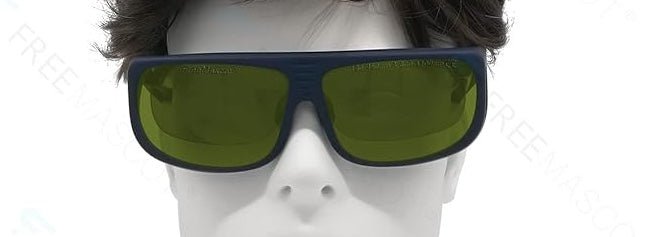
⚡️ The Brightest Mistake You’ll Ever Make: Why You Should Never Look at a Fiber Laser While It’s Engraving
It’s mesmerizing — that focused red dot dancing across metal, carving perfection at lightning speed. But staring at a fiber laser beam is not just another “cool maker moment.” It’s one of the fastest ways to permanently damage your eyes — literally in the blink of an eye. Let’s break down why that beam is so dangerous, what really happens when you look at it, and how to stay safe without dulling your creative spark.
1. The Laser You Can’t See Is the One That Hurts You
Fiber lasers operate in the near-infrared range (around 1064 nm) — light that’s invisible to the human eye. That means even if the engraving doesn’t look bright, the beam’s energy is still there — and it’s packing enough power to vaporize metal.
When that invisible beam scatters or reflects off shiny surfaces (like stainless steel or chrome), it can bounce straight into your eyes. Unlike visible light, your pupils don’t constrict because… well, they can’t see the danger coming.
The result? Retinal burns, instant blind spots, or in severe cases, permanent partial or total vision loss. And no — there’s no “instant pain warning.” The damage is often painless and irreversible.
2. Reflection: The Sneaky Enemy
Here’s the scary part — it’s not just the beam itself. Even reflected light can be dangerous. A stray reflection off a curved surface can carry enough intensity to exceed safe exposure limits by thousands of times.
Think of it like holding up a mirror to the sun — but the sun is focused into a microscopic beam powerful enough to etch steel. Not exactly something you want bouncing around your workspace.
3. Ordinary Glasses Won’t Save You
Regular safety glasses or tinted sunglasses? Useless.
They might protect you from debris or visible light, but fiber lasers require specific optical-density (OD) rated laser safety goggles — designed for the laser’s exact wavelength.
For example, a 1064 nm fiber laser typically needs goggles rated OD 6+ at 1064 nm, meaning they reduce that specific wavelength’s power by a factor of one million. Without them, you might as well be staring at the sun through a window.
4. But My Machine Has a Cover — So I’m Safe, Right?
Maybe. Enclosed fiber laser systems are usually designed to prevent exposure.
But open-frame or DIY setups? Different story. Even a small misalignment, missing side panel, or improperly placed mirror can let dangerous reflections escape.
If your machine doesn’t have a certified Class 1 enclosure (meaning “no laser radiation exposure during normal operation”), treat it like a loaded weapon — because that’s what it is.
5. Safe Doesn’t Mean Boring
Protecting your eyes doesn’t make you less of a maker — it makes you one smart move away from a long career instead of a short one.
Want to look at your engraving process? Use:
-
An IR-safe camera feed through a shielded enclosure.
-
OD-rated protective window filters made for your laser’s wavelength.
-
Or simply record your projects safely and watch the replay — your retinas will thank you.
⚠️ The Bottom Line
Never — ever — look directly at a fiber laser while it’s engraving, not even “just for a second.”
Fiber lasers are incredible tools, but they’re also medical-grade instruments of precision light. The same energy that etches steel in milliseconds can burn the light sensors of your eyes faster than you can blink.
Respect the beam. Wear your goggles. Keep your enclosures shut. Because seeing your work tomorrow is way cooler than seeing stars today.
These are the ones I use, no I do not get a kick back from them: FreeMascot Professional OD 8+
